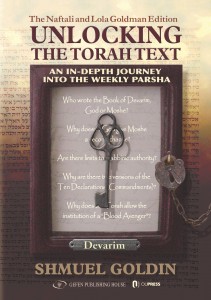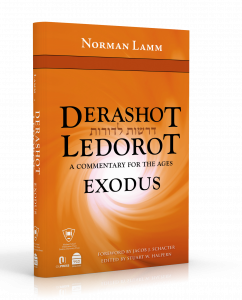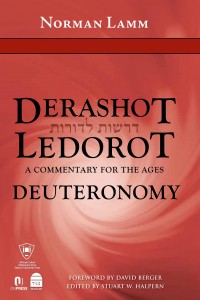Excerpted from Erica Brown’s Return: Daily Inspiration for the Days of Awe, co-published by OU Press and Maggid Books
Day Four: Humility
“For the sin we committed before You by haughtily stretching forth the neck.”.
The word humility is rooted int he Latin word for “grounded” or “low,” from the word “humus” or earth. To be a person of the earth is to realize that one is small. We come from the earth and will return to it, in Job’s immortal words; while we occupy it, we should take up a smaller spiritual footprint to make space for others. to be humble is to think modestly of one’s abilities and one’s place in the world. Being humble also means that we have the emotional bandwidth to make others feel good about themselves without believing that it detracts from our own sense of security. Humble people have the capacity to honor others. Arrogant people hoard all credit for themselves – as if complimenting others detracts from oneself.
A young man on the rise in his company shared his distress with me. One of his close colleagues, a man in a senior position, confessed to him out of the office when his guard was down that he hated hearing about his younger colleague’s successes. It frustrated him to no end that this rising star was sucking away attention from others, mostly from himself. He resented this man’s talent and was openly jealous. when we spoke about it, he was unsure what to do. Working hard was not enough. He had to learn to work hard and not have anyone notice, since his success was taking away from the success of his superiors.
Elie Wiesel famously said that one of the lessons he learned from receiving the Nobel Peace Prize was who his friends were. They were the people who could feel genuine happiness for his success, not begrudge him out of envy or spite. A test of true friendship and support is not only whether others empathize with our travails, but also whether they are able to rejoice in our better moments and compliment freely and sincerely. Friends celebrate the success of others, as it states in Ethics of the Fathers, “Let your friend’s honor be as dear to you as your own” (2:10). The capacity to honor and recognize the goodness and achievement of others is a signature of personal humility and security. If it is hard to compliment others, to make others feel good, then we have to look in the mirror and ask ourselves why.
Humility is critical to the life of the spirit because it enables us accept a subordinate position in relation to others and God. If we take up every word in a dialogue it becomes a soliloquy. If we take up all the space in a room, there is no room for God.
We stretch forth our necks in sin when we allow ourselves to sit in judgment over others. By making someone else inferior, we become more superior in our own eyes. Our necks metaphorically extend higher and then look down on others. Rabbi Luzzatto wrote about humility and arrogance throughout the pages of The Path of the Just, understanding that this battle preoccupies us all. It is a constant fight within.
Pride consists in a person’s pluming himself with his self and considering himself worthy of praise. There can be many different reasons behind this. Some deem themselves intelligent; some, handsome; some, honored; some, great; some, wise…When a man attributes to himself any of the good things of the world, he puts himself in immediate danger of falling into the pit of pride.
The pit of pride can swallow us whole. Rabbi Luzzatto believed that arrogance alone “stultifies the mind, which perverts the hearts of the highest in wisdom.”
Rabbi Moshe Teitelbaum (1759-1841), the Rebbe of Ujhely, Hungary, and a convert to Hasidut through his son-in-law, told this story in notes he made on the dreams of his youth. It is a good example of the pit of pride we must avoid. Rabbi Teitelbaum was looking out his window on the night of Rosh HaShana and watched as a throng of people hurried to the synagogue: “I saw that they were driven by the fear of the Day of Judgment.” He watched this with an outstretched neck and said to himself: “God be thanked, I have been doing the right thing all through the year! I have studied right and prayed right, so I do not have to be afraid.” Watching the sudden rush to synagogue did not stir panic within him. His good deeds and character were all in check. Why hurry? With this confidence he examined his dreams to review all his good works. “I looked and looked: They were torn, ragged, ruined! At that instant I woke up. Overcome with fear, I ran to the House of Prayer along with the rest.”
We recognize Rabbi Moshe’s stability. It is the posture of an overconfident man entering the Day of Judgment. We have all been there. Rosh HaShana caches us by surprise. We are blessedly unprepared. We feel good about ourselves. And why shouldn’t we? But then we pause to think more deeply about the year past and our regrets and mistakes, and suddenly we are overcome with Rabbi Moshe’s panic. Humility gets the better of us. Get thee to a synagogue. Fast.
In the synagogue at this time of year, we take ourselves out of the pit of pride and throw ourselves willingly into the pit of humility. Our prayers are designed to help us acknowledge our smallness in the universe. One of the most famous of these in an evening piyut, an acrostic poem of anonymous authorship, sung during Kol Nidrei:
Like the clay in the hand of a potter
Who thickens or thins it at his will,
So are we in Thy hand, gracious God,
Forgive our sin, Thy covenant fulfill.Like a stone in the hand of the mason
Who preserves or breaks it at his will,
So are we in Thy hand, Lord of Life,
Forgive our sin, Thy covenant fulfill.Like iron in the hand of the craftsman
Who forges or cools it at his will,
We are in Thy hand, our Keeper,
Forgive our sin, Thy covenant fulfill.
The request for forgiveness stays the same, but the way we refer to ourselves and to God changes. We review the different ways that God relates to us with mercy and authority, giving us life and sustaining us, as would a craftsman. We are mere raw material. Any ingredient of uniqueness we may possess – our health, our wealth, good looks, or a good mind – is God’s doing and in God’s hands to mold. It has little to do with us.
But even as we raise our voices in song and lower our impulse of pride, we know the synagogue is no safe place to escape the ego, especially during the Days of Awe. People are interested in ladies’ hats and suits and expensive jewelry. People are interested in who sits in what row. People are interested in others who sway and bow, the piety of those the observe in their peripheral vision. People are interested in the food served in various homes at festive meals after services. The fear and reverance that should comprise our awe is often comprised by our curiosity over the material or perceived spiritual excesses in our midst.
Rabbi Joseph Telushkin tells a story of his grandfather, also a rabbi. His grandfather served in the rabbinate for sixty years and told his grandson about a certain wealthy man in his congregation who was entitled to sit in a prime seat in the front of the congregation. He, instead, chose to sit in the back, watching others enter the sanctuary to see if they would notice that he was not sitting in the front. The elder Rabbi Telushkin finally confronted the wealthy man: “It would be better if you sat up front, and thought you should be seated in the back, rather than to sit in the back, and think the whole time you should be seated in the front.”
Sometimes we inherit the success of others, which we deem a cause for superiority: status, family wealth, or position in the community. Sometimes we work really hard to achieve material or academic success, and it happens, bloating us with pride. The sages of the Talmud pondered the question of why many Torah scholars have children who are not Torah scholars. Many of their answers have to do with arrogance. A scholar who regards himself as superior to others might make a child question whether religion matters. The child then opts out of religion.
Even in the arena of Torah study, a cardinal value of Jewish life, scholarship is riddled with battles for status. This problem was addressed outright in Ethics of the Fathers: “Do not give yourself airs if you have learned much Torah, because it is for this purpose you were created” (2:8). We are entitled to feel joy when we have discovered and are living our life’s purpose but joy is not the same as superiority. Superiority only brings down the spirit and ruins the reputation of the mind as a tool for meaning. It too often becomes a tool for status, even – and some could argue especially – among Torah scholars.
There is little in the world more insufferable than self-righteousness. Those who suffer from it believe that God is on their side, supporting the piety of the observant against the ignorance of those who are not. Self-righteousness lies at the very heart of the fundamentalist, making him police officer, judge, and prosecutor. In contract, God makes a small request through the agency of the prophet. “Act justly, lover mercy, and walk humbly with your God” (Micah 6:8). Micah asks this of us as if it were easy and imposed no great burden. Yet the burden of humility is the very fact that we have to remind ourselves of it always.
Humility can be a result of the way we were raised, a character trait we come by easily – or it may have been conditioned by a change of circumstances. Tragic experiences often take a person from a place of pride to a place of humility. The person who stretches forth his neck above others becomes the very same person who sits with his head bowed because life suddenly took an unexpected turn for the worse. When all is well, we gives ourselves extra credit, believing that we are worthy of all our successes. But when a change of fortune sits in, it is not only that we lose something concrete – like a spouse or a job or our savings – but we also lose a self-image consonant with success. The captain-of-the-universe posture rusts a confusing, beguiling, and disappointing mess.
Just ask Job. There is no better story to illustrate this than the spiritual whiplash suffered by Job. Job had everything: a large family, wealth, and status born of his wisdom. And then Job became the unwitting victim in a wager between God and Satan: God believed that a faithful servant would be loyal in an circumstance; Satan believed that only those who are blessed stay true to God. God pointed to the person He deemed most successful in the ancient Near East: Job of the land of Uz. Job is introduced as a man who was “blameless and upright; he feared God and shunned evil” (Job 1:1). He had ten children – seven of whom were boys, a sure sign of blessing in the days of old – and a vast estate. “The man was wealthier than anyone in the East” (1:3). But by the end of the first chapter, Job had lost all of his children, and his world quickly unraveled.
Later in the story, Job reflects on the man he had once been in his prime: “O that I were as in months gone by, in the days when God watched over me, when His lamp shone over my head, when I walked in the dark by His light” (29:2). At that time, Job says, his children surrounded him and his feet were “bathed in cream” (29:6). He had the attention of nobles; young men hid from him out of fear. He helped others who were unfortunate; men would listen for his words of wisdom. He describes his words as drops of dew to men who were thirsty for his counsel. But after calamity struck, he walked in the streets ashamed and denigrated, a man of little worth among friends.
It must have felt good to be regarded so highly, to walk into a room and have people hang on your every word and enjoy “love like a king among his troops, like one who consoles mourners” (29.25). The one who consoles mourners extends pity to others; he never imagines himself as an object of pity to others.
In the very first chapters that follow his catalogue of woes, Job begins to understand his altered position and curses his very existence: “Perish the day on which I was born and night it was announced…May that day be darkness. May God have no concern for it. May light not shine upon it” (3:4-5). Job never curses God; he only wonders at why he was ever brought into existence. The worst tragedy that could befall him struck. The nightmare of all nightmares was real:
My groaning serves as my bread;
My roaring pours forth as water.
For what I feared has overtaken me;
What I dreaded has come upon me.
I had no repose, no quiet, no rest.
And trouble came. (3:24-26)
A man of prominence has stopped eating. A mouth that once could afford any delicacy is filled with groaning. His most dreaded fears have come true, leaving him without respite. And what happens in over forty chapters that follow is the total transformation of a man of success into a brittle version of his former self. His faith stays constant, but his pride is replaced with despondency.
The secret of Job’s humility was no secret at all. As his life shrunk in its capacity for blessing, Job questioned all the assumptions that lead to success, particularly the belief in human mystery. The mortal hubris of achievement was crushed in a single blow, leaving Job winded.
As the book nears its end, God speaks directly to Job, asking Job is had an inkling of understanding of how the world works. God moves Job’s ruminations from self-pity by asking him to contemplate the complexity of a world far beyond his comprehension:
Where were you when I laid the earth’s foundations?
Speak if you have understanding.
Do you know who fixed its dimensions
Or who measured it with a line?
Onto what were its bases sunk?
Who set its cornerstone
When the morning stars sang together
And all the divine beings shouted for joy? (38:4-7)
God, the divine structural engineer, questions Job about the foundations of the universe and who set it all in motion. As if Job’s tragedies had not humbled him sufficiently, God in the next several chapters continues to question Job about seemingly every facet of the world: lightning, the ocean, clouds, snow, constellations, the hunting instinct of the lion, the season when mountain goats give birth, the way an ostrich beats its wings, the way the eagle soars. All of nature is governed by a force so vast that no person, however wise, can conceive of it all. We read Job and are reminded of the poem “Design” in which Robert Frost meditates on “a dimpled spider, fat and white.” He looks at it closely and marvels at its intricacies and its capacity to frighten human beings:
What but design of darkness to appall?–
If design govern in a thing so small
God asks Job if he can possibly understand the natural world, the design of each creature and its relationship to the ecosystem that God manufactured. To this, Job can muster only silence and a weak response, the response of humility:
See, I am of small worth. What can I answer You? I clap my hands to my mouth. (40:4)
We, too, are small in God’s immense universe. Practice humility. Making ourselves smaller helps us appreciate the vastness of a world so much larger than we are.
LIFE HOMEWORK
Task 1: Imagine for a moment that are being honored or are receiving an award. Identify what you might be honored for at this moment. A friend of mine sets his professional achievement goals this way: he imagines what he woudl want to be honored for five years from now and works towards it. Think about what it would be like to stand in front of a podium and be recognized for that achievement.
Now imagine that there is no certificate, no award, no crystal plaque with your name on it. The award you will get instead has nothing to do with your profession or your academic achievements. It is awarded by your children or your parents or a friend because you set as your goal the honor and needs of someone else. We get that award long from now in eulogies that one day will be offered when we are no longer around to hear the. What would you like someone to say about you at your funeral?
Task 2: Think of someone in your life who is not expecting to hear from you and who has just achieved something of importance. Go out of your way to celebrate his or her success in detail, letting him or her know how proud you are and why. In the spirit of Ethics of the Fathers, let your friend’s honor be as dear to you as your own.










